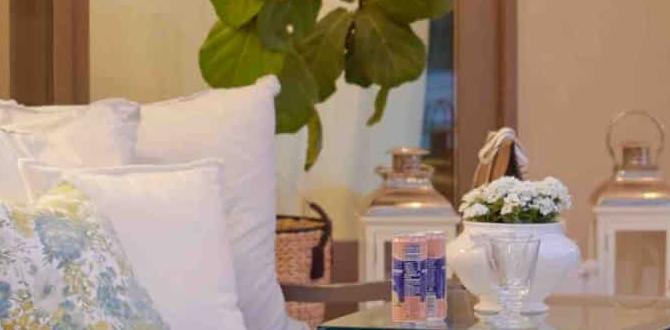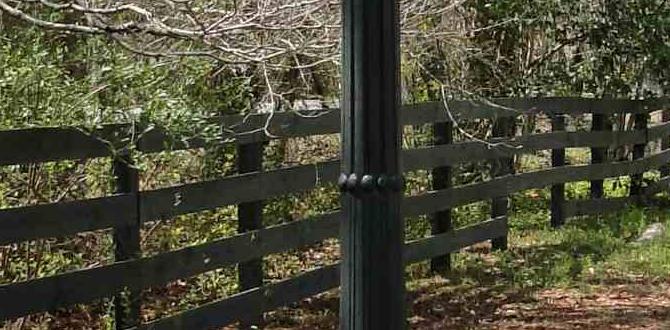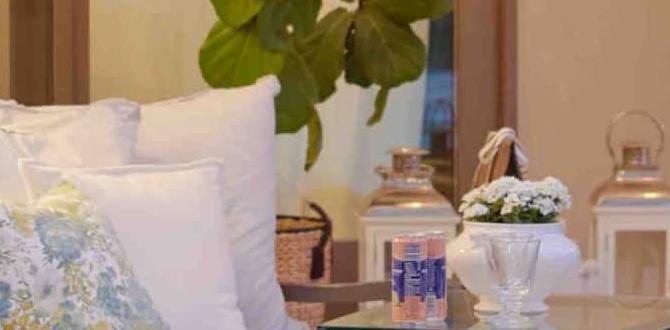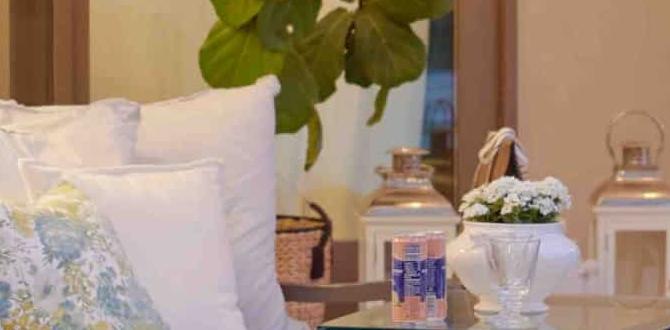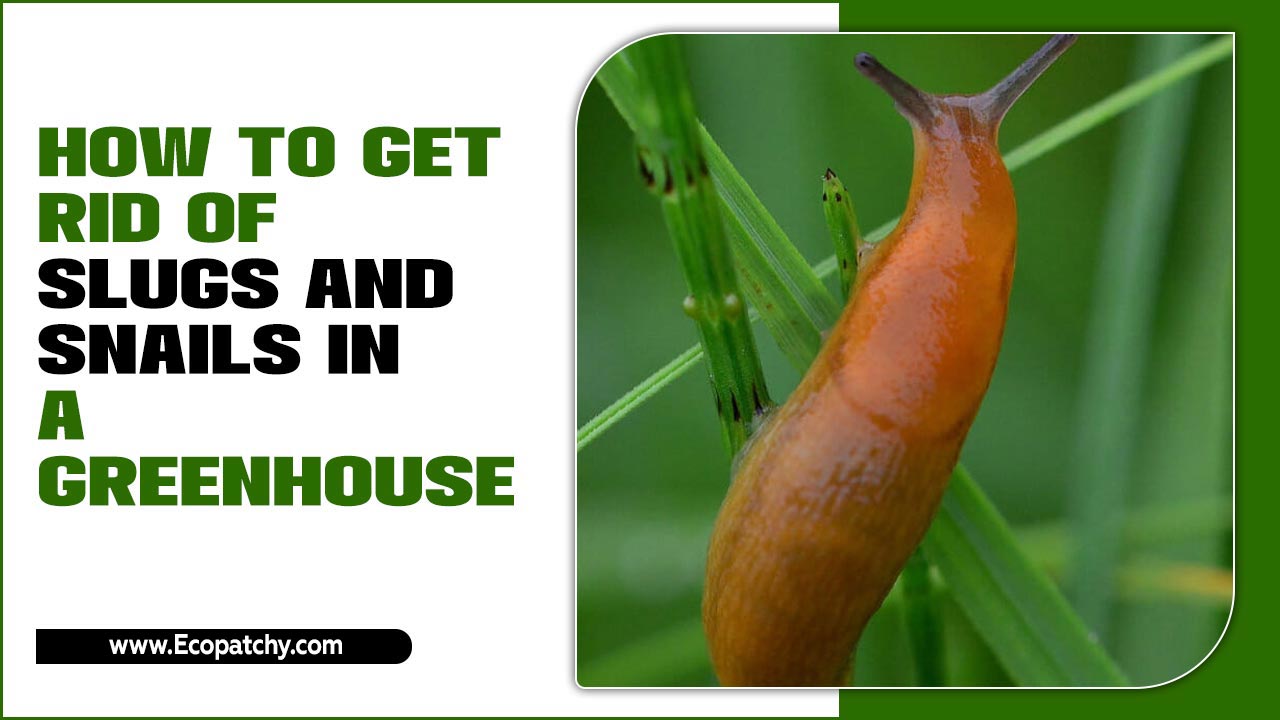Lavender is a versatile plant that can be grown in gardens, pots, or containers. It is known for its calming scent and beautiful color. While it may seem difficult to grow lavender in pots, it is actually quite easy once you understand the basics.
Here we will provide a complete guide on how to grow lavender in pots successfully. From understanding the plant and its history, choosing the right type of lavender for container gardening to a step-by-step guide on growing lavender in pots successfully and troubleshooting common issues with growing lavender in pots.
We will also discuss the benefits of growing lavender in pots and the essential supplies needed for growing lavender in pots. If you want to add a touch of beauty and fragrance to your home or garden, this post is perfect for you.
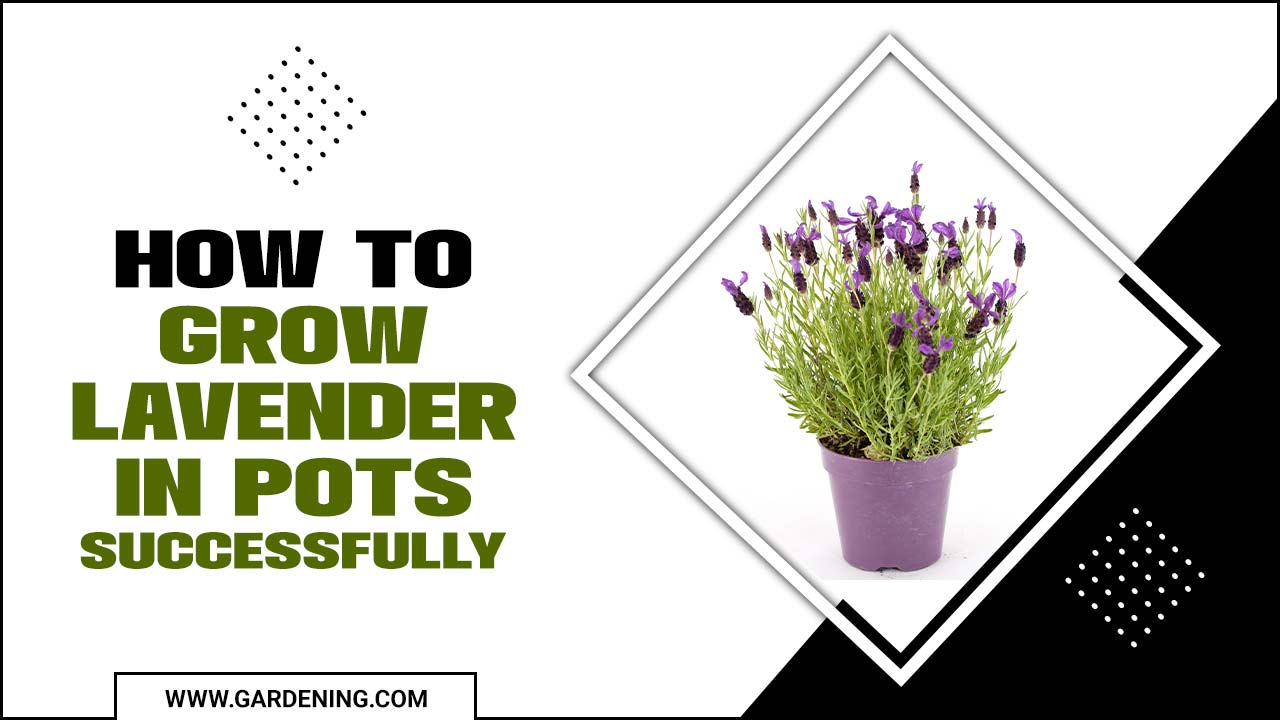
Choose The Right Type Of Lavender For Container Gardening
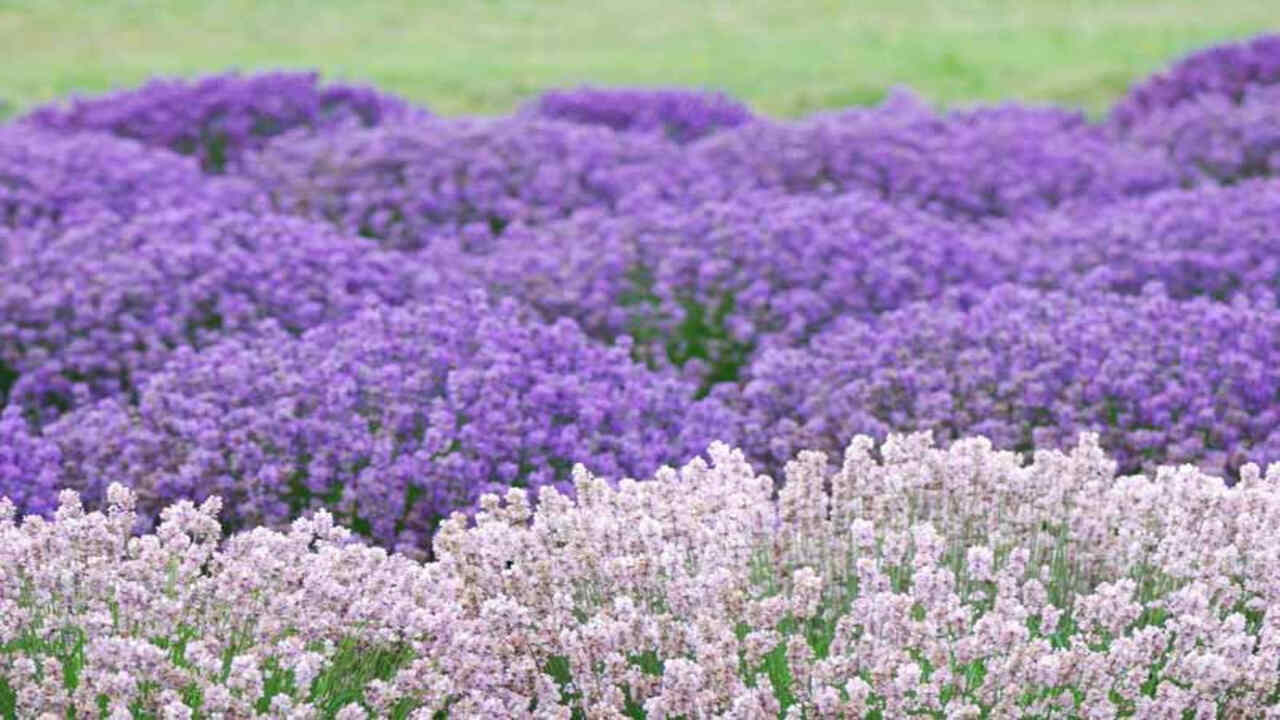
When it comes to growing lavender in pots, choosing the right type is crucial for success. Consider climate, container size, and personal preference when choosing a lavender variety. By selecting the right type of lavender, you can ensure that your container garden thrives and fills your space with the delightful scent of this beloved herb. Here are some tips to help you select the perfect variety for your container garden:
- English Lavender (Lavandula Angustifolia): This is the most popular and widely grown type of container lavender. It has a compact growth habit and produces fragrant flowers in shades of purple and blue.
- French Lavender (Lavandula Dentata): French lavender is known for its unique serrated leaves and vibrant purple flowers. It tends to have a more bushy growth habit, making it a great choice for larger containers.
- Spanish Lavender (Lavandula Stoechas): This variety is easily recognizable by its distinctive “rabbit ears” flower bracts. Spanish lavender tends to be more heat-tolerant than other types, making it ideal for warmer climates.
- Lavandin (Lavandula X Intermedia): Lavandin is a hybrid between English and spike lavender. It has a stronger fragrance than English lavender and can tolerate a wider range of growing conditions.
- Hidcote Lavender (Lavandula Angustifolia ‘Hidcote’): This cultivar of English lavender is known for its deep purple flowers and compact growth habit. It is well-suited for container gardening due to its smaller size.
How To Grow Lavender In Pots Successfully: A Step-By-Step Guide
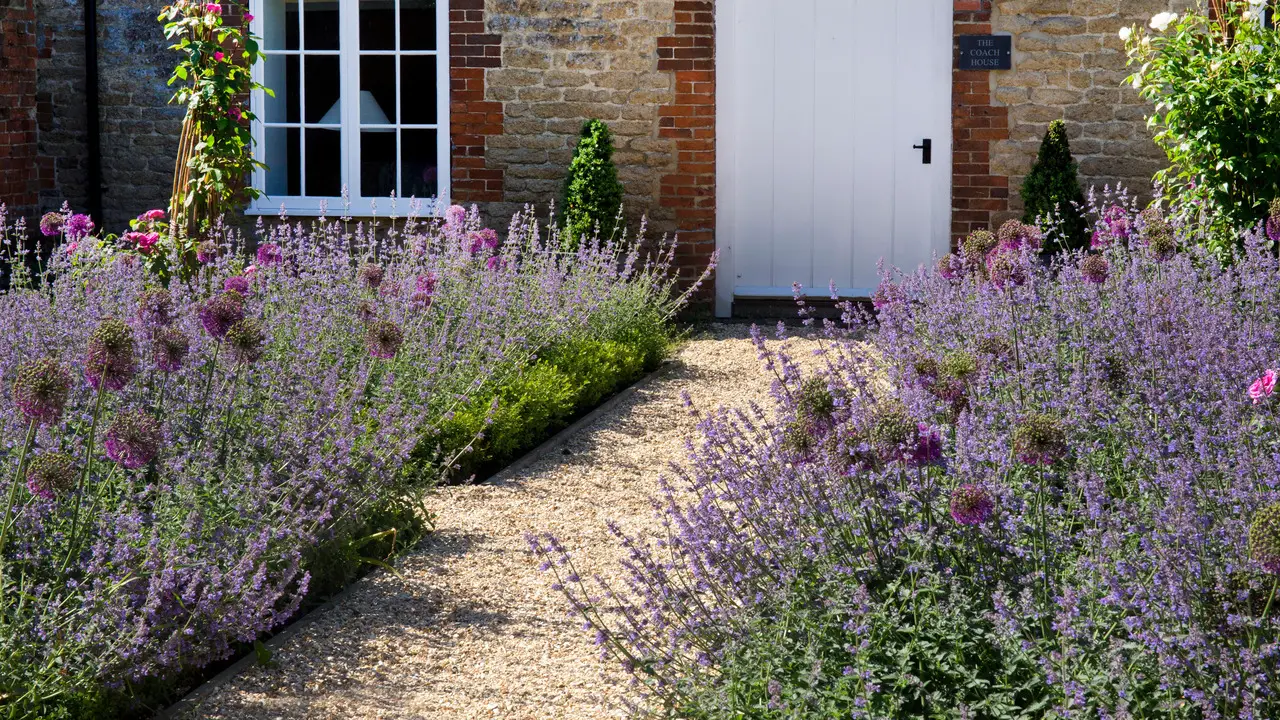
With its captivating fragrance and vibrant purple flowers, lavender thrives in full sun and well-draining soil. It can be grown in pots or on the ground, making it versatile for any garden. With different varieties available, such as English lavender, French lavender, and Spanish lavender, you have plenty of options.
Growing lavender in pots can be a rewarding and fragrant experience. To successfully grow lavender in pots follow these step-by-step instructions on how to grow lavender in pots successfully:
Step 1: Choose The Right Container And Soil
To successfully grow lavender in pots, the first step is to select a container with good drainage and an appropriate size. It’s important to choose a well-draining soil mix specifically formulated for lavender. Consider adding clay pebbles at the bottom of the container for even better drainage. Make sure the container has enough room for the root ball to grow. Finally, place the container in a sunny spot to promote the growth of your lavender plants.
Step 2: Starting With Seeds Or Sprouts
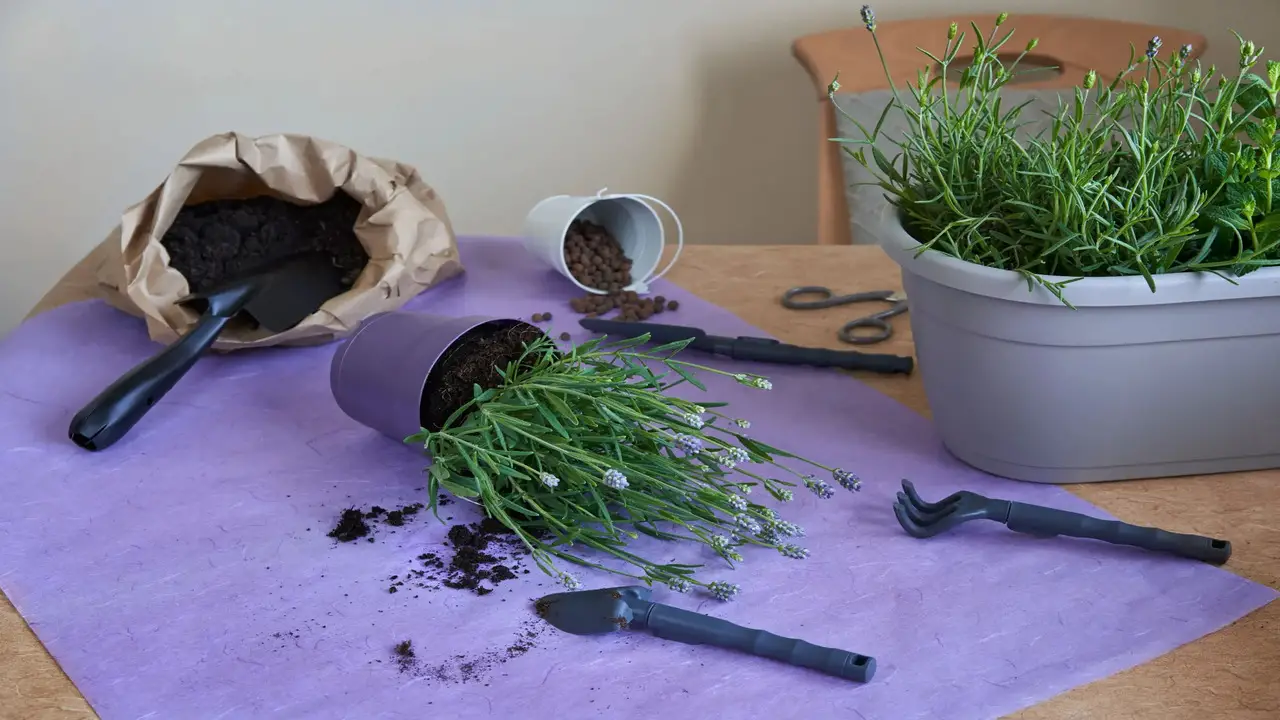
To begin growing lavender in pots, you have two options: starting with seeds or using sprouted lavender plants from a nursery. If you start with seeds, sow them in small pots with a well-draining soil mix.
Another option is to use sprouted lavender plants from a nursery and carefully transplant them into larger pots. When planting the lavender seedlings, water them gently to avoid disturbing the roots. Keep the pots in a protected area until the plants are established.
Step 3: Place It In A Sunny Location
To successfully grow lavender in pots, choosing a sunny location that receives at least 6 hours of direct sunlight is important. Consider placing your pots on a south-facing balcony or patio to maximize sun exposure. To ensure even sun exposure, rotate the pots occasionally.
Avoid placing lavender pots in shaded areas or indoors, as they thrive in full sunlight. Keep an eye on the plants for signs of sunburn or excessive heat stress, which may require adjustments to their placement. By providing the right amount of sunlight, your lavender plants will flourish and yield beautiful blooms.
Step 5: Fertilizing Your Potted Lavender
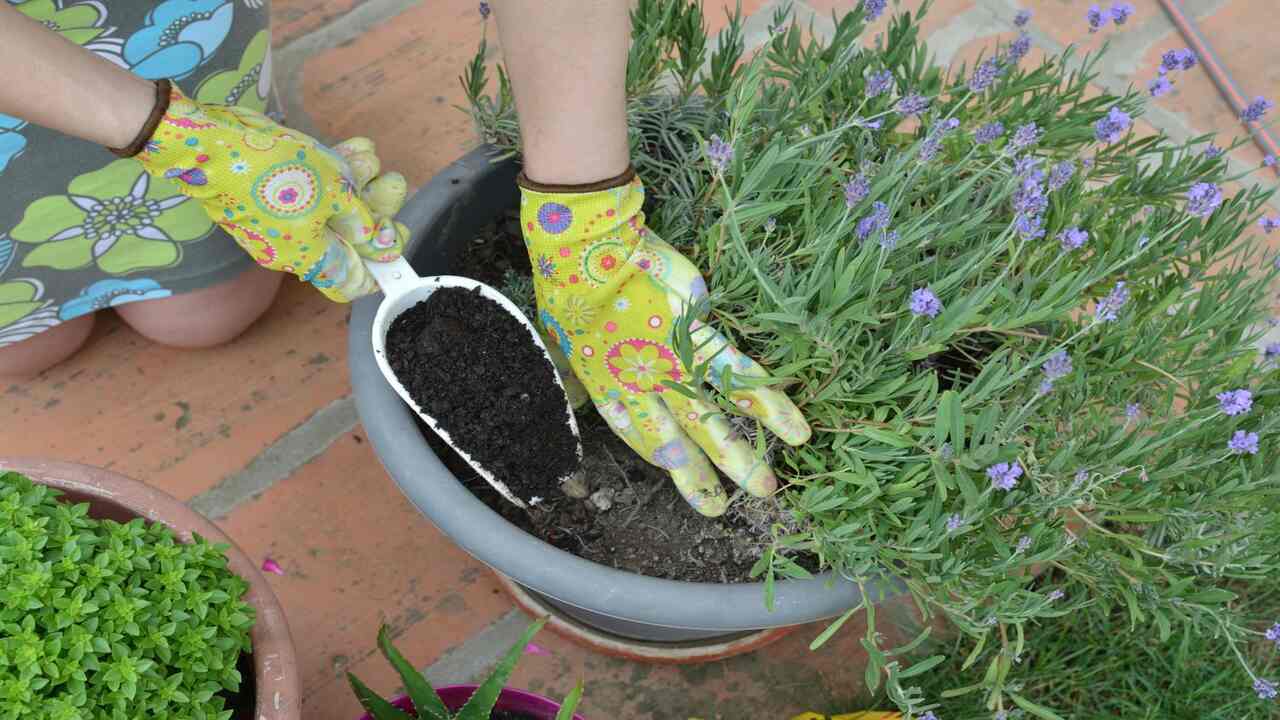
To ensure successful growth of your potted lavender, it’s important to provide the right nutrients. Use a slow-release fertilizer specifically formulated for lavender and follow the manufacturer’s instructions for application. However, be cautious not to over-fertilize, which can result in leggy growth and less fragrance.
Before applying the fertilizer, water your plants to prevent root burn. It’s also advisable to regularly monitor your lavender for nutrient deficiencies and adjust the fertilization accordingly. By taking these steps, you’ll ensure that your potted lavender thrives with vibrant blooms and a wonderful fragrance. Happy gardening!
Step 4: Watering Your Potted Lavender
To ensure the success of your potted lavender, proper watering is crucial. Lavender requires well-draining soil to prevent root rot, making choosing a pot with excellent drainage essential. When watering, thoroughly water deeply, but be cautious not to overwater.
Allowing the soil to dry out slightly between watering sessions is a good rule of thumb. Additionally, it’s important to avoid getting water on the foliage or flowers as it can lead to fungal growth. Use a watering can or hose with a gentle spray nozzle to water your potted lavender without disturbing the soil or roots.
Step 6: Pruning Your Potted Lavender
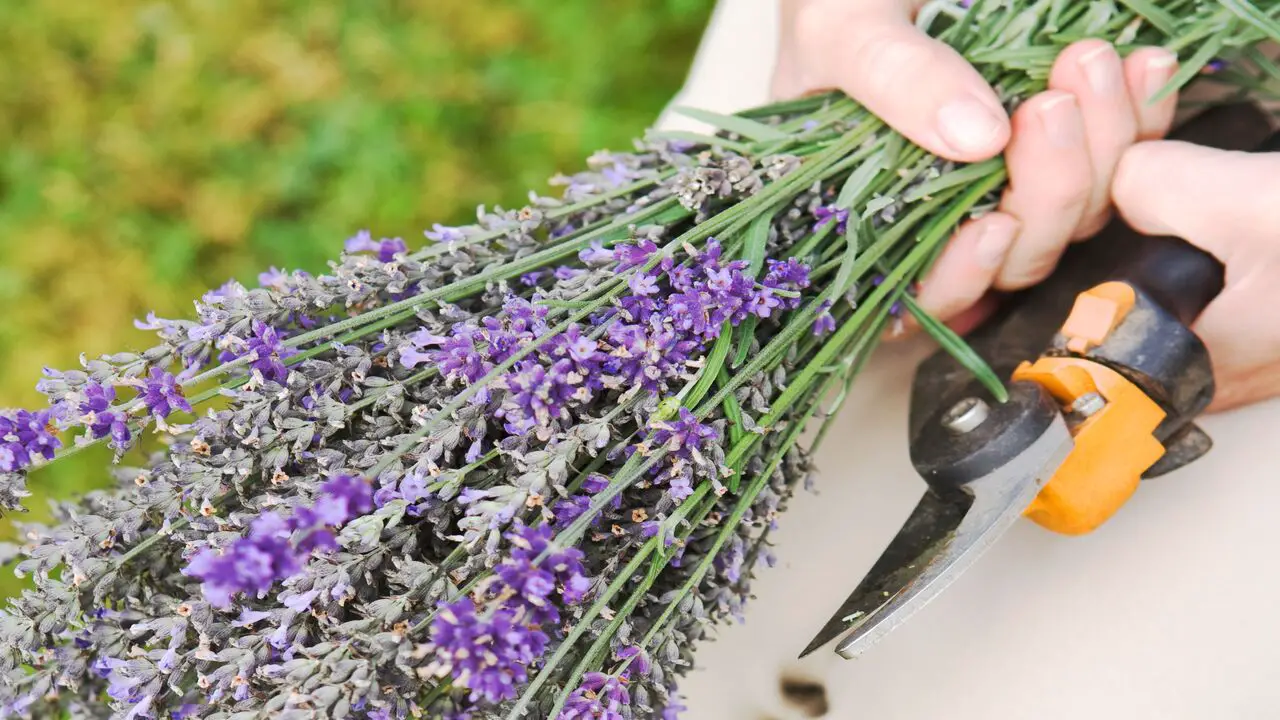
Regular pruning is essential to maintain the shape and size of your lavender plant. This promotes new growth and increases the plant’s lifespan. Pruning should be done in the spring or fall, avoiding cutting into woody stems. Use sharp, clean pruning shears and cut just above a set of leaves.
Remove any dead or diseased branches to prevent the spread of disease. Pruning helps keep your potted lavender healthy and thriving, ensuring vibrant blooms all season.
Step 7: Controlling Pests And Diseases
To ensure the health and vitality of your potted lavender plants, it is important to be vigilant and proactive in controlling pests and diseases. Watch for common culprits such as aphids, spider mites, and whiteflies, which can wreak havoc on your plants. In the event of an infestation, opt for organic or homemade insecticides to effectively treat the problem.
Additionally, prevent fungal diseases by watering your lavender from the bottom and avoiding overhead watering. Should any fungal diseases arise, promptly address them with a suitable fungicide or remove infected leaves. Regularly prune and deadhead your lavender plants to prevent overcrowding and promote optimal air circulation, ensuring their continued health and vibrancy.
Step 8: Propagating Lavender From Cuttings
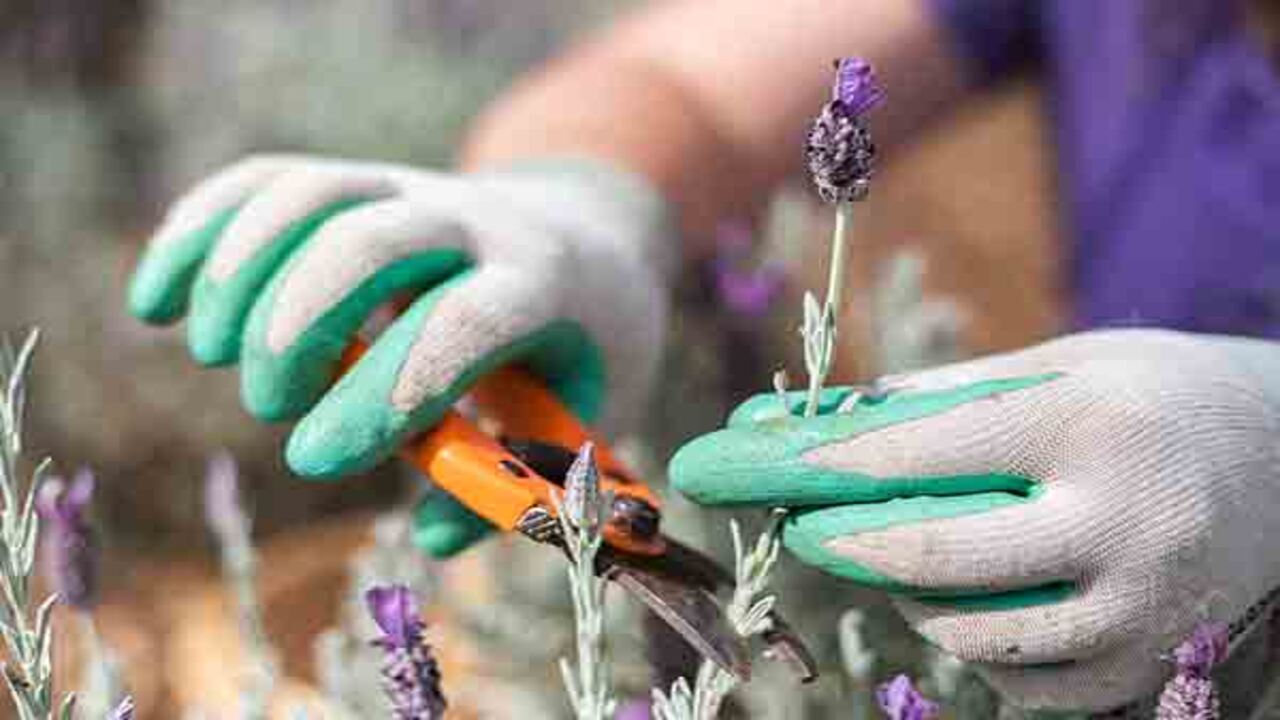
Propagating lavender from cuttings is an effective way to expand your lavender plant collection. Start by selecting healthy, non-flowering shoots for cutting. Remove the lower leaves, and dip the end in the rooting hormone to encourage root development. Plant the cutting in a well-draining potting mix, ensuring the top of the soil is level with the bottom of the remaining leaves.
Cover the cutting with a plastic bag to retain moisture and place it in a warm, bright location. Mist the cutting regularly until roots begin to form. Once rooted, transplant the cutting into a larger container or the ground for continued growth.
Step 9: Enjoying The Fragrant Blooms
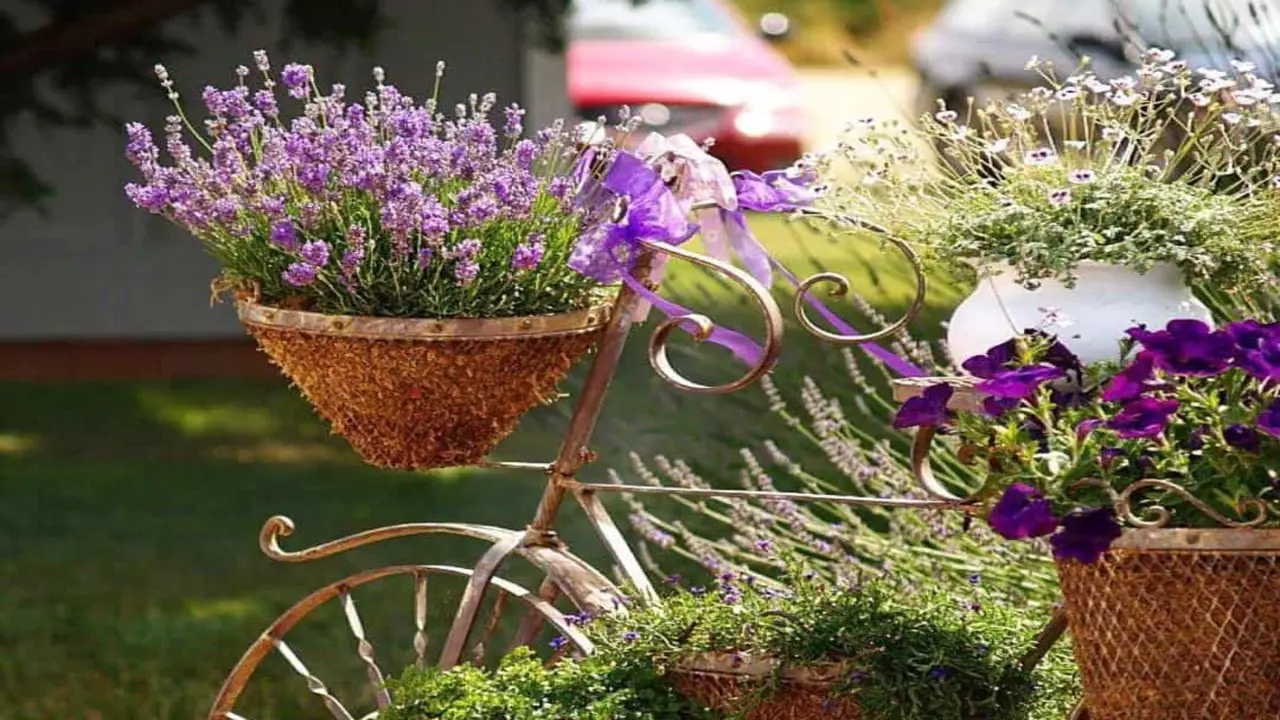
Once your lavender plants have established themselves, it’s time to delight in the sight of their beautiful blooms and bask in the captivating fragrance they exude. To promote continuous blooming and prevent seed production, it is essential to regularly remove spent flowers by deadheading them.
Don’t overwater your potted lavender plants, as they prefer well-drained soil. Consider safeguarding your lavender plants from harsh winter weather in regions with colder climates by moving them indoors or covering them with a layer of mulch. With consistent care, you can relish the aromatic splendor of your potted lavender for multiple seasons.
Step 10: Re-Potting And Repositioning Lavender
Re-potting lavender is an essential step in successfully growing it in pots. Lavender should be re-potted every 2-3 years or when it outgrows its current container. When choosing a new pot, opt for one size larger than the current pot and has drainage holes to ensure excellent drainage.
Before re-potting, water the lavender thoroughly a few hours in advance, as this helps the plant stay hydrated during the transition. When repositioning the lavender, select a spot with at least 6 hours of direct sunlight and good airflow. After re-potting, remember to water the lavender immediately and then gradually reduce the watering frequency until the plant adjusts to its new container.
The Benefits Of Growing Lavender In Pots
Growing lavender in pots can offer a range of benefits for both experienced gardeners and beginners alike. One of the main advantages is that it allows you to control the growing conditions, such as the soil type and drainage, which can be crucial for lavender’s health and growth.
Potted lavender also makes it easier to move the plants around, allowing you to find the ideal spot with optimal sunlight exposure. Additionally, growing lavender in pots can help prevent its spread, as this plant tends to take over gardens if not properly contained. Lastly, potted lavender can serve as a beautiful and aromatic addition to any outdoor space or balcony, adding a touch of color and fragrance to your surroundings.
Essential Supplies For Growing Lavender In Pots
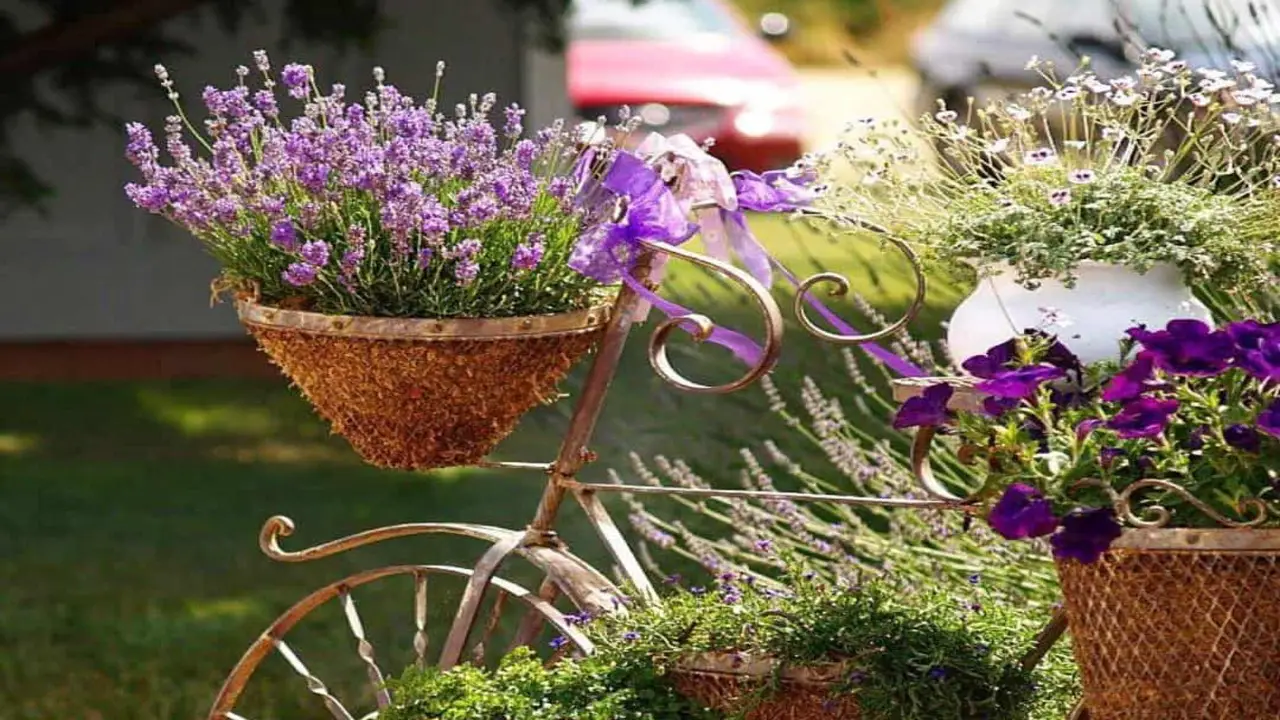
When growing lavender in pots, having the right supplies is essential for success. With these essential supplies, you will be well-equipped to successfully grow lavender in pots and enjoy its beautiful blooms and soothing fragrance. Here is a list of the essential supplies you will need:
- Pot: Choose a pot with good drainage at least 12 inches deep for proper root growth.
- Soil: Lavender prefers well-draining soil, so use a mix of potting soil and perlite or sand to improve drainage.
- Lavender Plants: Purchase young lavender plants from a reputable nursery or start them from seeds.
- Fertilizer: Use a slow-release organic fertilizer specifically formulated for herbs to provide nutrients to your lavender plants.
- Watering Can Or Hose: Lavender requires regular watering, especially during dry spells, so make sure you have a watering can or hose nearby.
- Pruning shears: Regular pruning helps promote bushier growth and prevents legginess, so invest in a pair of quality pruning shears.
- Mulch: Apply a layer of organic mulch around your lavender plants to help conserve moisture and suppress weed growth.
Troubleshooting Common Issues With Growing Lavender In Pots
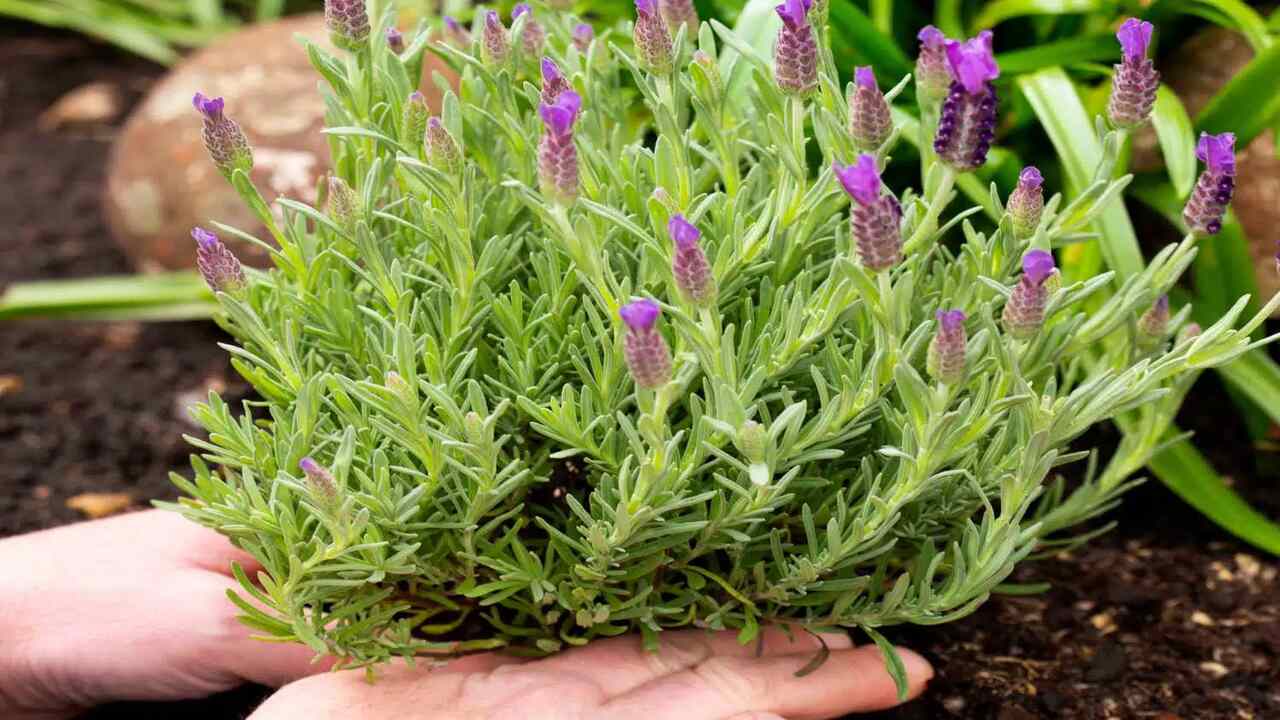
Growing lavender in pots can be a rewarding experience, but it can also come with its fair share of challenges. By addressing these common issues and providing proper care, you can grow lavender in pots and enjoy its beautiful blooms and aromatic fragrance all season long. Here are some tips for troubleshooting common issues that may arise when growing lavender in pots:
- Drainage Issues: Lavender plants require well-draining soil to thrive. If you notice water pooling at the bottom of the pot or if the soil feels consistently wet, it may be a sign of poor drainage. To fix this issue, add perlite or sand to the potting mix to improve drainage.
- Overwatering: Overwatering is a common mistake when growing lavender in pots. These plants prefer dry conditions and can suffer from root rot if kept too moist. To prevent overwatering, allow the top inch of soil to dry out before watering again and ensure the pot has drainage holes.
- Insufficient Sunlight: Lavender plants love sunlight and require at least 6-8 hours of direct sunlight each day. If your lavender is not blooming or appears weak, it may be due to insufficient sunlight. Consider moving the pot to a sunnier location or using artificial grow lights to supplement natural sunlight.
- Pests And Diseases: Lavender is generally resistant to pests and diseases, but occasionally aphids or fungal diseases can affect these plants. If you notice small insects or signs of disease, such as wilting or discoloration, treat the problem promptly with organic insecticides or fungicides.
Harvesting And Using Lavender From Potted Plants

Harvesting and using lavender from potted plants can be a rewarding experience. By following these tips, you can enjoy the beauty and benefits of lavender grown in pots all year round.
Here are some tips to help you successfully harvest and utilize your lavender:
- Timing Is Key: Harvest your lavender when the flowers have just begun to open but before they are fully bloomed. This is when the essential oils are at their peak.
- Cut correctly: Use sharp, clean scissors or pruning shears to cut the lavender stems about one-third down from the top. This will encourage new growth and ensure a healthy plant.
- Dry Properly: Bundle the cut stems and hang them upside down in a cool, dark place with good airflow. Allow them to dry for about two weeks until they are crisp and brittle.
- Utilize In Various Ways: Lavender has many uses, from aromatherapy to culinary applications. You can make your lavender oil and sachets or use them in cooking and baking.
Conclusion
Growing lavender in pots can be a rewarding and enjoyable experience. By following the step-by-step guide on how to grow lavender in pots successfully and taking care of your potted lavender, you can enjoy the fragrant blooms and reap the benefits of this versatile plant.
It not only adds beauty to your garden or balcony but also has a variety of uses. From its calming aroma to its potential health benefits, lavender is a wonderful addition to any space. Whether a beginner or an experienced gardener, growing lavender in pots is a great way to bring nature closer to you.
Frequently Asked Questions
1.Can Lavender Be Grown Indoors?
Ans: Yes, lavender can thrive indoors if it receives sufficient sunlight. It requires at least 6 hours of direct sunlight daily. Choose well-draining soil and water only when the soil is dry. Regular pruning helps maintain shape and encourages new growth.
2.Does Lavender Grow Well In Pots?
Ans: Lavender can thrive in pots if the right conditions are met. Ensure your pots have good drainage and are large enough to accommodate lavender roots. Use a well-draining soil mix and water sparingly. Choose a suitable lavender variety for container gardening to improve its growth in pots.
3.What Type Of Soil Should I Use For Potted Lavender?
Ans: For successful growth, potted lavender requires well-draining soil. Create a mix of potting soil and perlite or sand to enhance drainage. Aim for a pH level between 6.5 to 7.5 by adding lime or sulfur if necessary. Avoid heavy clay soil that retains moisture and consider incorporating organic matter like compost or aged manure for improved soil structure and nutrient supply.
4.Do You Have Questions About Growing Lavender?
Ans: If you have questions about growing lavender, here are some important points. Lavender thrives in well-draining soil and full sun exposure. It’s crucial to water deeply but let the soil dry out between waterings. Regular pruning promotes bushier growth. Watch out for pests like spider mites and diseases like root rot and powdery mildew.
5.Can Lavender Survive Winter Outdoors In A Pot Or Does It Need To Be Moved Indoors?
Ans: Lavender can survive winter outdoors in a pot with precautions. Place the pot in a sheltered location, protect roots from freezing with insulation or burlap, and avoid harsh winds and extreme cold temperatures. Alternatively, move lavender indoors near a sunny window during winter.

